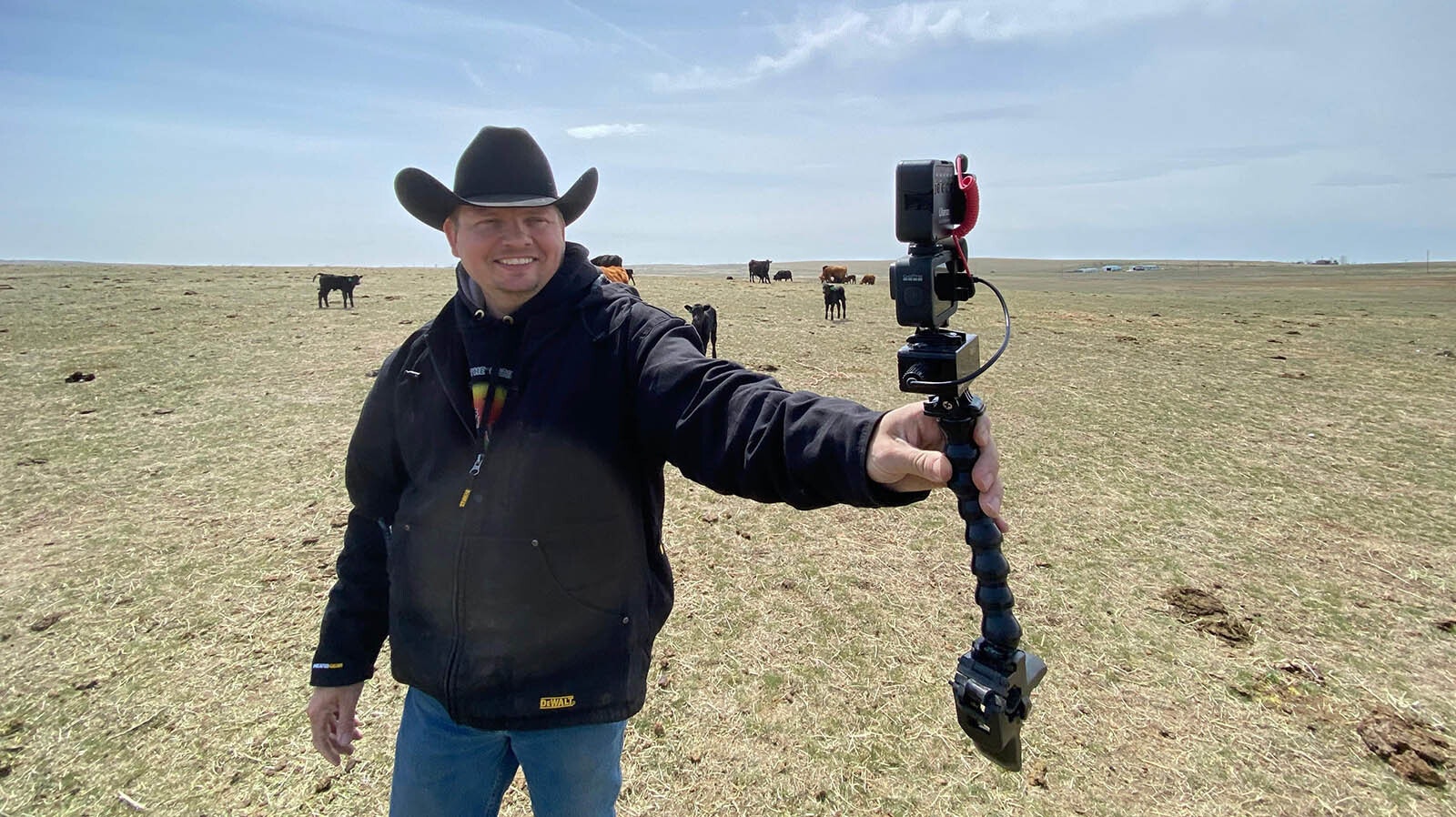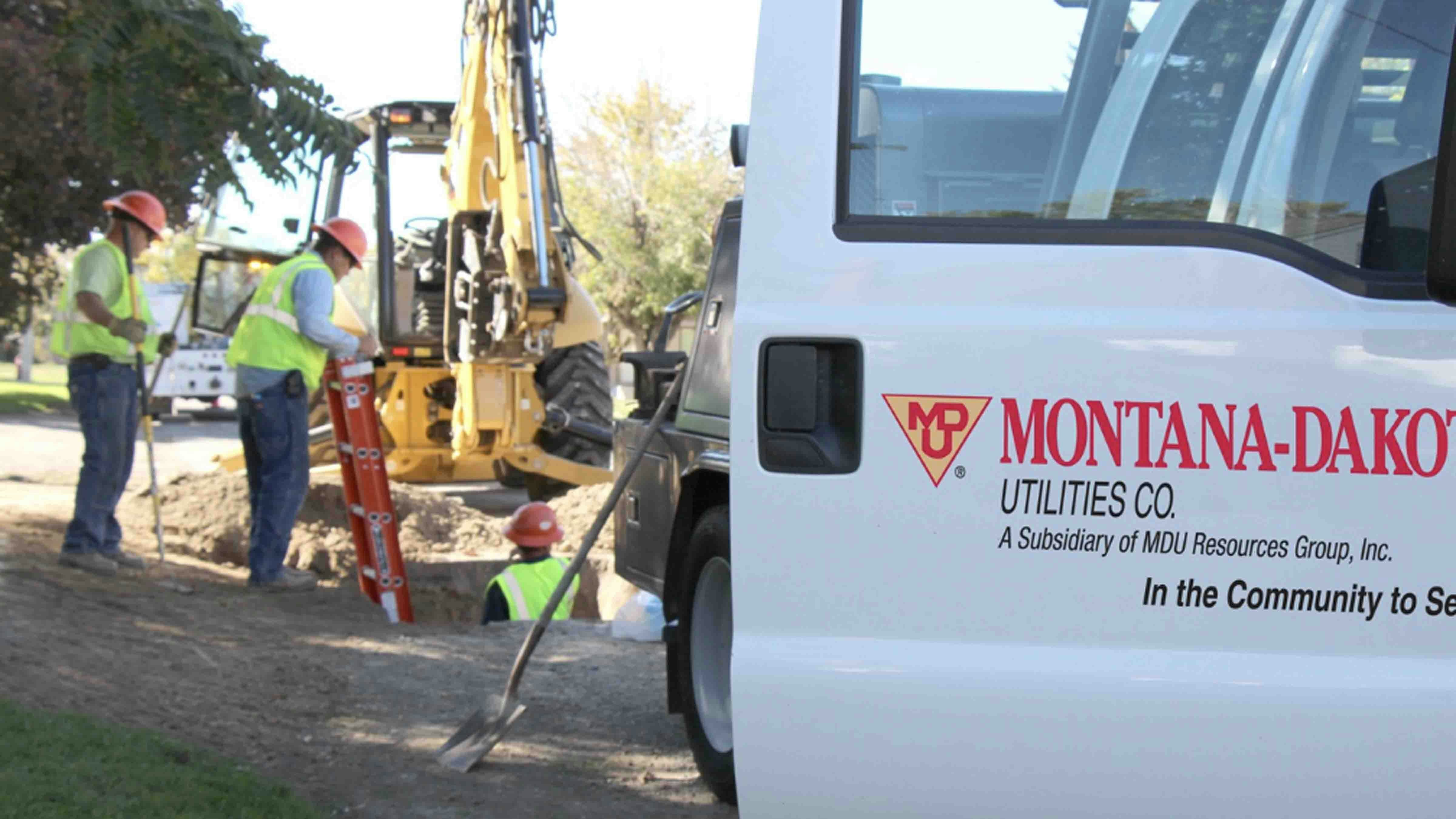As agriculture tries to sustain itself in a modern, technological world, more people in the industry are recognizing that success requires marketing and promotion, which runs counter to the tradition of the strong, stoic cowboy.
Taking selfies and posting to social media doesn’t come naturally to most farmers and ranchers.
Sage Askin, owner of Askin Land and Livestock in Lusk, said it’s not easy for “stalwart, salt-of-the-earth people” to break out of that comfort zone to speak about themselves, much less do it on TikTok.
“I think that’s what the future is. I would love for stockgrowers to have more of a digital footprint that way,” Askin said.
Askin Land and Livestock has an attractive website advertising their services. They also have a Facebook page, but like most family operations on social media, rarely post updates.

Podcasts And Webcams
Our Wyoming Life, however, has a strong social media presence. Owners Mike and Erin Galloway had a leg up on how the world of modern marketing works. Before becoming farmers and ranchers near Gillette in northeast Wyoming, they worked in radio and television.
After helping a sick friend feed cows, they fell into the farming and ranching life. While many family farms may have a Facebook page with occasional updates, the Galloways have a website with T-shirts, hats and other merchandise. They have webcams around their farm and the Airbnb they run. They also do podcasts and have their own YouTube Channel with 247,000 subscribers and 45.6 million views over its lifetime.
It all began early in their operation when the Galloways were struggling to make ends meet.
“It was hard to watch the ranch barely squeaking by,” Mike Galloway said.
The Galloways got the idea to do a quick video showing how they raise their cows as a marketing tool for the beef they sold at the farmers market. They ended up with more than 1,000 subscribers, and Mike Galloway noticed was most of the comments and subscribers weren’t from the Gillette area. Their viewers were asking questions about what kind of cows produce chocolate milk and why there are no trees on their Wyoming ranch.
The Galloways realized that people don’t know where their food comes from. At one time, Mike and Erin were the same way. They went to the grocery store to buy hamburger, and that’s all they knew about where food comes from — the grocery store.
They saw their former selves in the comments on YouTube.
“We decided at that point that we had a kind of a unique opportunity to start showing people where their food comes from,” Mike said.
Today, they present a strong social media presence with their Our Wyoming Life brand, as well as a direct-to-consumer business model.
Mike Galloway said they don’t sell any of their livestock at auction. They make a wide variety of products — from T-bone steaks and bacon to honey and ice cream — which they sell online or at their brick-and-mortar store in Gillette.
Kids These Days
Jim Magagna, president of the Wyoming Stockgrowers Association, said that until the past decade, the culture of rugged individualism was the way of the cowboy.
“We didn’t feel we had to advocate for our industry or for our products. We took care of our animals. We took care of the land. And we did what we did with our business, and the rest took care of itself,” Magagna said.
He said things were changing before the pandemic, but when people went to the grocery store to find there was no meat on the shelves, they began asking a lot more questions about where their food comes from. On the internet, they found a lot of information about farming and ranching, but it wasn’t from farmers and ranchers.
People got the mistaken impression that food was full of poisons, ranchers weren’t good to their animals, and farmers weren’t good stewards of the land, even though their livelihoods depended on it, he said.
“It’s caused us to step up and tell our story a lot better,” Magagna said.
Next Generation
Mark Eisele agrees that promotion is important, and said it’s something the younger generation is better at doing. His family runs a large operation on the historic 25,000-acre King Ranch Co. just outside Cheyenne, where they raise cow-calf pairs, and grow alfalfa and native grass hay.
“Most kids come back to a farm or ranch. They have some roots in tradition and culture, but they’re also better at adapting to new technologies to help them do a better job. And they also realized that we’re not doing as good of a job telling our story about what we do and how we do it,” Eisele said.
Times Are A-Changin’
The Galloways aren’t the only ranchers taking to social media to put the farming life on display for the world to see. The Peterson Farm Brothers are siblings who farm near Assaria, Kansas. They have YouTube videos that combine humor and education — such as a parody of the LMFAO song “Sexy and I Know It” called “I’m Farming And I Grow It” — along with speaking engagements.
Michelle Miller started her career in agricultural advocacy after becoming frustrated with social media sensation and New York Times bestseller Vani Hari, also known as the Food Babe. Hari’s campaigns demonized genetically modified foods and exaggerated the health benefits of organic food, which left her millions of fans with the idea that farmers were poisoning people.
Miller launched her own brand called the Farm Babe to counter what she believes is misinformation about agriculture with her own social media campaigns, speaking engagements, and agricultural journalism.
Stepping On Toes
Not everyone appreciates this new direction in agriculture.
“We’ve stepped on toes. There are people that don’t like me because I’ve said things that don’t agree with the way that the industry has gone on for the last 100 years,” Mike Galloway said.
He said that the industry is trying to survive on slim margins in which farmers and ranchers have to work multiple jobs to make ends meet. Then, when an old tractor breaks down, the year’s profits are lost. On top of that, when kids see their farming and ranching parents working themselves to the bone for meager profits, they pass on a career in agriculture.
He said there’s a better way and more people in the agricultural industry are catching on.
“It’ll be interesting to see how the next 20 or 30 years go,” he said. “I like the idea of farmers and ranchers being able to take control of their own industry.”





